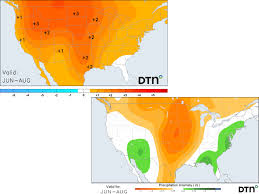Weather Predictions for 2025: What to Expect

Introduction
The study of weather patterns is a crucial component of climate science, aiding in preparation for future environmental conditions. As we approach 2025, understanding anticipated weather shifts becomes increasingly important for communities, governments, and industries. This article delves into expert predictions for global weather patterns in 2025, highlighting potential impacts on agriculture, health, and disaster preparedness.
Current Climate Trends and Projections
Scientists have been closely monitoring climate data, which indicates that 2025 may experience intensified weather phenomena, largely attributed to climate change. According to the Intergovernmental Panel on Climate Change (IPCC), global temperatures are expected to rise between 1.5 to 2 degrees Celsius compared to pre-industrial levels by 2025. This rise could lead to more severe storms, droughts, and heatwaves, particularly in vulnerable regions such as sub-Saharan Africa and southern Asia.
Regional Outlooks
In North America, experts predict that the northeastern U.S. might face harsher winters, while the southeast could experience more frequent hurricanes. Canada is expected to see an increase in extreme weather events as well, affecting its vast agricultural sectors and ecosystems. On the other hand, parts of Europe may face wetter conditions, especially in winter, prompting concerns about flooding and infrastructure durability.
Implications for Agriculture
Changes in weather patterns will significantly impact agricultural productivity. Warmer temperatures may shorten growing seasons in northern regions, while droughts can threaten yields in areas reliant on consistent rainfall. Farmers will need to adapt by embracing innovative agricultural practices and investing in drought-resistant crop varieties.
Health and Safety Considerations
Increased temperatures and severe weather conditions can have dire implications for public health. Heat-related illnesses are expected to rise, particularly among vulnerable populations such as the elderly. Moreover, the frequency of natural disasters may lead to injuries, displacement, and mental health struggles. Governments will need to enhance public health campaigns and emergency response strategies in anticipation of these challenges.
Conclusion
As we approach 2025, acknowledging these forecasts empowers individuals and governments alike to take proactive measures to mitigate the associated risks. With a changing climate on the horizon, actions taken today can significantly influence preparedness and resilience against future weather-related challenges. Understanding weather predictions and their implications will be essential for crafting sustainable solutions in various sectors, ensuring a safer and more adaptive future.









